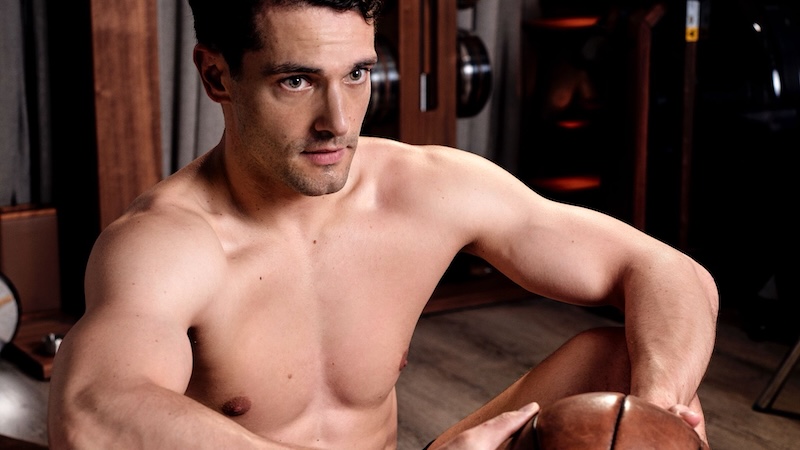Training as Preventive Medicine
Why Movement Is the Most Underrated Health Habit
When people talk about training, they often think of aesthetics: building muscle, losing fat, or getting “in shape.”
But the real value of movement goes far beyond that. Exercise isn’t just about how you look — it’s one of the most powerful forms of preventive medicine we have.
The research is overwhelming, but still underrated: regular physical activity reduces the risk of almost every major chronic disease — from heart attacks to depression, diabetes to dementia.
And yet, we still treat training as a hobby, instead of what it really is: a basic part of health maintenance.

1. The Modern Health Paradox
We live longer than ever, but not necessarily better.
In most developed countries, people spend the last 15–20 years of their lives with some form of chronic illness — cardiovascular disease, metabolic syndrome, osteoporosis, or joint pain that limits daily life.
The strange thing is that many of these conditions aren’t inevitable. They’re lifestyle-related — and largely preventable.
But prevention doesn’t feel urgent. We act when it hurts, not before.
That’s where training changes everything.
Regular movement doesn’t just make you stronger today. It improves the systems that will protect you decades from now: your heart, your metabolism, your bones, your brain.
2. The Body Is Built to Move — and to Decline When It Doesn’t
Our bodies evolved for movement — walking, lifting, climbing, carrying.
Modern life, however, rewards stillness. We sit to work, sit to eat, sit to relax.
Within weeks of inactivity, muscle fibers shrink, insulin sensitivity drops, and blood pressure increases.
Within months, your posture changes, your joints stiffen, and your aerobic capacity — one of the strongest predictors of longevity — begins to fall.

Movement is the antidote.
Not intense training every day, but regular movement: walking, strength work, mobility, breathing.
It doesn’t just “burn calories.” It maintains the machinery that keeps you alive.
3. The Heart: Train It Before You Need It
Cardiovascular disease is still the number one cause of death worldwide.
The irony? It’s also one of the most preventable.
You don’t need to run marathons to protect your heart.
Studies show that just 150 minutes per week of moderate physical activity — that’s 30 minutes, five times a week — can reduce cardiovascular risk by up to 40%.
When you train, your heart learns to pump more efficiently. Your arteries stay more elastic. Your blood pressure stabilizes.
You’re literally building a more resilient system — one that won’t fail the first time it’s tested.
4. Muscles: Your Best Long-Term Insurance
Most people think of muscle as something aesthetic.
In reality, it’s one of the most important predictors of long-term health.
Muscle tissue regulates blood sugar, supports joints, and protects against injury. After the age of 30, we naturally lose about 3–5% of muscle mass per decade — unless we train.
That’s called sarcopenia, and it’s one of the main reasons elderly people lose independence.
Strength training — even with simple movements or light weights — is one of the most effective ways to slow that decline.
It’s not about building a “bodybuilder’s physique.” It’s about keeping the ability to get up, carry groceries, and live without fear of falling.

5. The Brain: Movement Is Cognitive Health
Here’s something most people don’t realize: training doesn’t just change your body; it changes your brain.
Exercise increases blood flow to the brain, supports the growth of new neurons, and boosts neurotransmitters like serotonin and dopamine.
That’s why regular training reduces the risk of depression and anxiety — and why active people show better memory and attention as they age.
Movement literally helps your brain stay young.
Even 20 minutes of walking can improve focus and mood.
So when you train, you’re not just investing in physical capacity — you’re investing in mental clarity and emotional balance.
6. Prevention Is Boring — Until It’s Urgent
The hard part about prevention is that it doesn’t feel rewarding right away.
It’s not exciting to train for something that might not happen. But here’s the truth: that’s exactly how real health works.
When you brush your teeth, you’re not doing it for today. You’re preventing decay.
Training works the same way — it’s hygiene for your whole body.
The tragedy is that many people only start moving after a diagnosis — hypertension, diabetes, a back problem.
By then, it’s not prevention anymore; it’s damage control.

If we could shift the mindset from “fitness” to “health maintenance,” we’d probably cut the burden of chronic disease in half.
7. Making It Sustainable
The biggest mistake people make is thinking they need to do everything at once.
They start too hard, burn out, and stop.
In reality, the best training plan is the one you can keep doing next month, next year, and ten years from now.
That means finding something you enjoy, even a little.
Walking, strength work, swimming, yoga — it doesn’t matter. What matters is consistency and progression.
If you can move, breathe, and sweat regularly, you’re already doing more for your long-term health than 90% of people.
8. The Real Goal: Healthy Aging
Training isn’t about being young forever. It’s about aging well.
It’s about staying mobile, independent, and pain-free for as long as possible.

When I see clients in their 50s and 60s lifting weights, improving their balance, regaining confidence — that’s the best result I can imagine.
They’re not chasing performance. They’re building freedom.
And that’s the point.
Training is not punishment. It’s preparation — for the decades still ahead.
Conclusion
Exercise is not a luxury, or a side activity for the motivated few.
It’s preventive medicine — free, powerful, and available to everyone.
It won’t make you immortal, but it will make you stronger, sharper, and harder to break.
And in a world where so much feels out of our control, that’s something worth fighting for.









